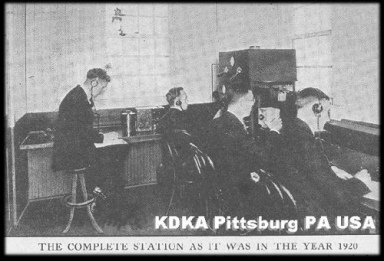
Conceptualized desire originated in 1916 by David Sarnoff (Russian employee of Marconi) in his document known as the “Radio Music Box Memo.” Before the public radio was established however, the government used the transmission capabilities for broadcasts covering the war effort to be received by the American families. When WWII ended the government forcibly merged top competing companies: American Marconi, General Electric, American Telephone, and Westinghouse creating the Radio Corporation of America (RCA).
Frank Conrad, a Westinghouse engineer, sparked enough listener attention to receive a license to broadcast from the Dept. of Commerce. On Nov. 2, 1920 his station in Pittsburg, KDKA made its first broadcast.

Out of the 14,952 radio stations in the U.S. today: 4,766 are AM, 6,542 are FM, and 3,644 are noncommercial.
FM- Frequency Modulation
- Wider signal allows for better fidelty of broadcasts (sound quality)
- Focus: Music
- Non commercial stations are sans advertising. They were established in the Communications Act of 1934 to make programming for religious, children, world news, and education. FCC deemed stations: 88.1 – 91.9 noncommercial and today are host to local, community and national informational programming such as WXPN for philadelphia and NPR for the nation.
- Low Power FM are 10- to 100 watt nonprofit community stations that have a range distance of only a few miles
AM – Amplitude Modulation
- Narrower signal means a harsher quality of broadcast
- Focus: News, sports, traffic
- Signals reach a farther distance
- Rural listeners but locations are less populated therefore still fewer listeners then FM
